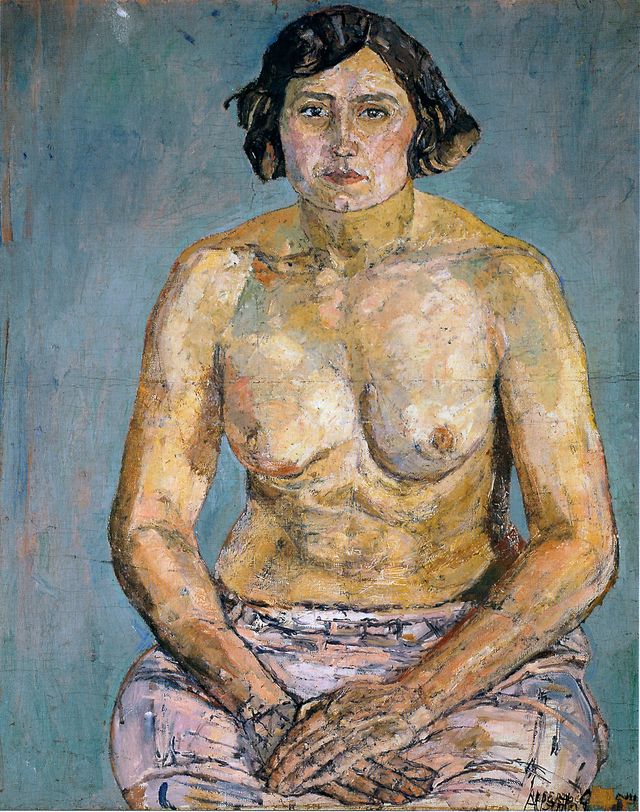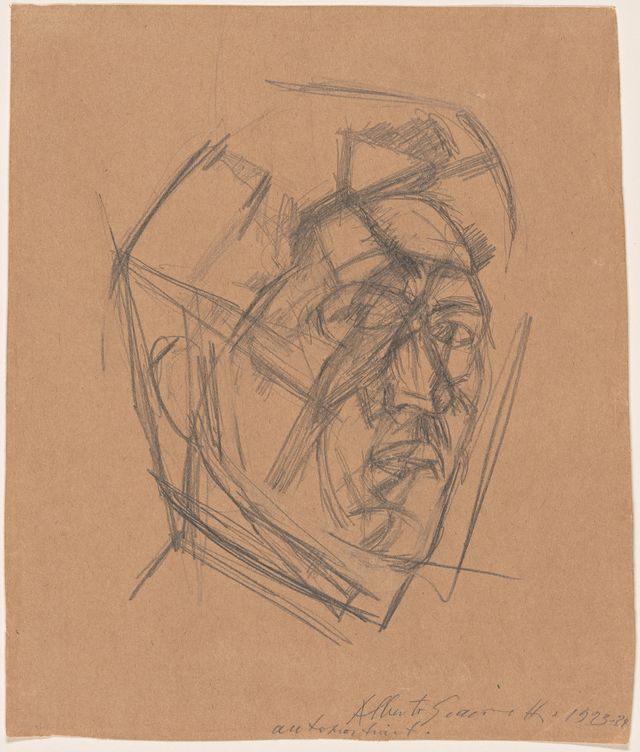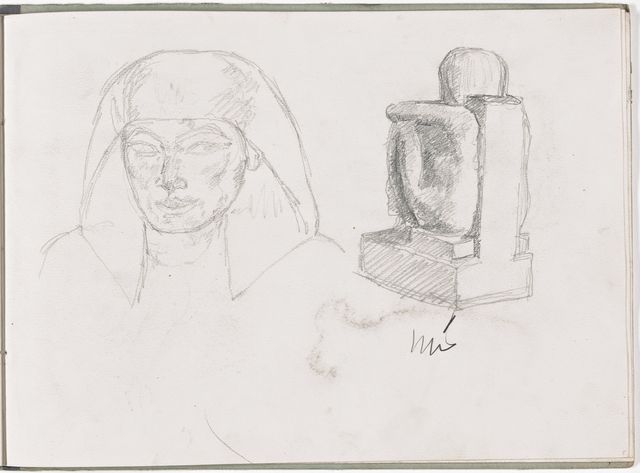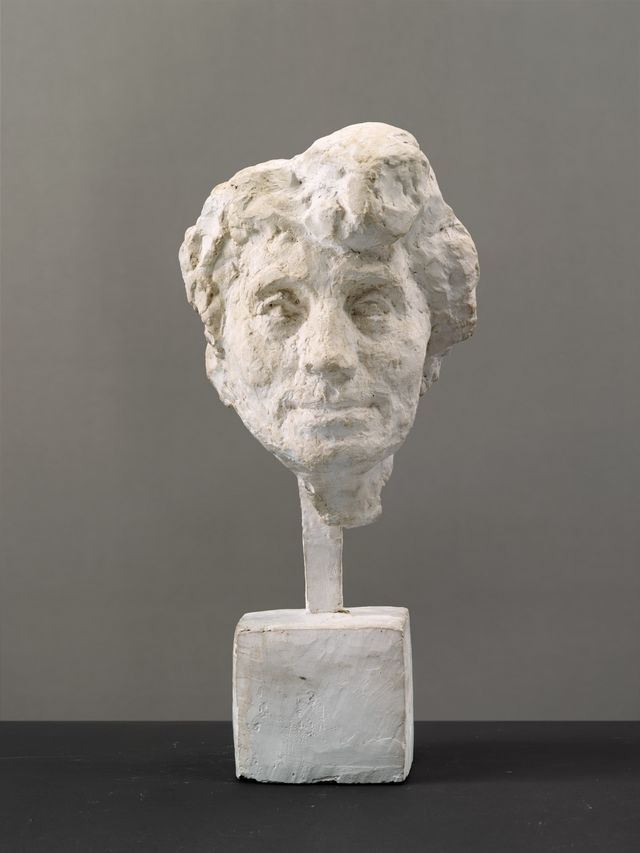
Training and Early Years in Paris
1920–1924
Giacometti leaves Geneva for Stampa in late March 1920. In May, in Venice with his father, he is enchanted by the city and greatly admires Tintoretto’s work. On the journey home, he visits Padua and is deeply moved by Giotto’s frescoes in the Scrovegni Chapel. By late November, he is back in Italy for a lengthy study period, and spends three weeks in Florence, where he particularly admires a piece of sculpture in the city’s Egyptian Museum. After Florence, he visits Perugia and Assisi, where he discovers the art of Cimabue.

From 21 December, Giacometti spends six months in Rome, where he is enthralled by the city’s art treasures, and particularly fascinated by the art of Antiquity, the Baroque, and Byzantine mosaics. He paints several portraits and canvases inspired by the Greek tragedies.
In July 1921, Giacometti is back in Maloja. By September, he is again in Italy at the invitation of Peter van Meurs, an elderly Dutchman whom he had met on the train from Paestum to Naples. On arrival in Madonna di Campiglio, van Meurs falls gravely ill and Giacometti witnesses his suffering and death, events which are to scar him for life.
Once back in Stampa, he starts working with his father again and decides to become a sculptor.
By 9 January 1922, he is in Paris, studying sculpture under Émile-Antoine Bourdelle at the Académie de la Grande Chaumière. Deeming them experimental, Giacometti later destroys all the sculptures and drawings he did during these early years. Only the family portraits made in Stampa and given to the sitters, survive.


